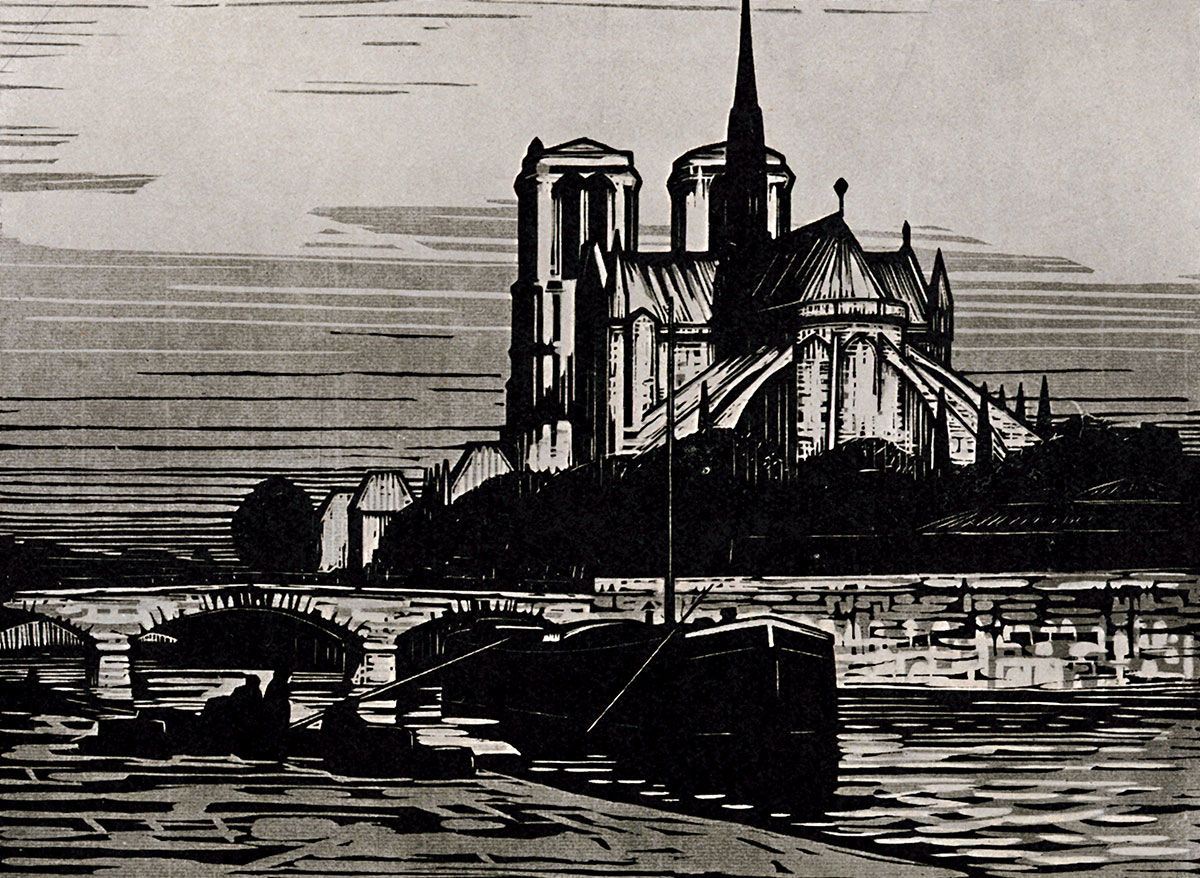The Lost Voice of Notre-Dame - 5 minutes read

On an August evening a century ago, Marcel Dupré lifted his hands from the keyboard of the Grande Orgue of Notre-Dame de Paris at the end of his final improvisation for vespers that evening. At the moment that his dazzling toccata came to an end, the building continued to sing its response to the immense sound of the organ for many seconds. The 15 improvisations conjured that evening alternated with the 15 unaccompanied sung parts of the service – five psalms, verses of the hymn Ave Maris Stella and the Magnificat – dating from before the cathedral’s construction began in the 12th century. This tradition of alternatim – chant with organ improvisations inspired directly by the musical material or by the text that the music sets – straddles the existence of that building. The unique acoustic response of Notre-Dame, afforded by its immense size and its stone construction, has been almost completely muted by the fire that raged on 15 April, destroying all of the roof and parts of the ceiling.
The observed laws of physics do not change. Soundwaves travel at a speed of about one kilometre every three seconds. Given Notre-Dame’s vast length (120m), width (48m) and height (69m at the towers), it can take some time for waves to travel from one end to another. When the waves hit the unyielding stone floor, walls and ceiling, they are reflected and returned. Eventually, because there is some small loss of energy at each reflection, the sound falls below an audible level, but this reduction takes many seconds. By this time soundwaves have travelled 24 kilometres and, while the high frequencies have fallen to inaudible levels, the lower frequencies can still be heard, leading to a darkening effect. All of this contributes to a uniquely glorious and rich sound with which Notre-Dame answered to any kind of acoustic activity within it. As the English organist Graham Steed noted: ‘One plays, not only on the instrument, but on the building itself.’ Until last month, we could still hear the building that Dupré’s music played, a century ago. Now, the building is acoustically stricken and its response to music profoundly altered.
There have been some changes over the centuries, but the building’s main structure has remained largely immutable. The century following the dedication of the cathedral church in the early 1160s coincided with a spectacular flourishing of Western music. For hundreds of years the liturgy had known only the single lines of Gregorian chant, sung daily from memory by the clergy. Some time in the late 12th century Magister Leoninus, composer, poet and canon of the cathedral, compiled the Magnus Liber Organi (The Great Book of Organum), the first significant collection of music in more than one part, requiring virtuosic soloists in addition to the chant choir. A generation later, Magister Perotinus reworked many of these into elaborate pieces for up to four voices. The sheer scale of these manuscripts and the sophisticated musical establishment that they implied parallels the creation of the vast Gothic construction in which they were first heard.
As the building grew, so did the sounds it contained, yet medieval sources are mostly silent on the subject of acoustics. The reasons for this lie in the medieval psyche, the importance of religious ritual and the nature of the medieval auditory experience. Until the coming of recording at the end of the 19th century, music could only be experienced by its makers or by those in the presence of the music-makers: musicians could only be heard when seen. Medieval secular music happened at home and dance and ceremonial music would have happened outside; in neither of these circumstances would the acoustics have enhanced the listening experience. The acoustic environment of a church immediately gives distance to the sound, unique to the building itself. The sheer size of Notre-Dame, even when just the choir was completed in 1177, would have had implications for both singers and listeners. Many of the daily monastic offices sung throughout the year happened behind closed doors for the contemplation of the monastic community alone, but on the great feasts the citizens of Paris were admitted, often in huge numbers. They would have witnessed colourful processions, which stopped for the singing of the new polyphony by dedicated soloists, but much of the music-making would be out of sight, the music floating unseen through the vast and mysterious spaces. The reverberation alone would undoubtedly have contributed to a sense of awe and wonder that not only moved the congregation but increased the authority of the church itself.
There was no choir in the modern sense until the 16th century as music was always a byproduct of the ritual, carefully controlled by the senior clerics, every aspect of it embedded in the liturgy. Everyone sang the chant regardless of their vocal ability and even the special soloists who sang the new complex polyphony were chosen in the first place for their position in the cathedral hierarchy. It was not until many generations later that singers were auditioned and one suspects that, impressive as the singing may have been in such a vast space, the sounds might have been more pleasing to God than to a modern listener.
In 1919 the effect of Dupré’s virtuosic invention and playing upon one member of the congregation was profound. Charles Johnson, managing director of the Rolls-Royce company, went to him immediately after and offered to pay for a transcription of his improvisations for publication and to arrange for him to perform them at the Albert Hall in London. These scores remain, yet the building in which Dupré played them (and, as Steed noted, the building itself that he played) can no longer respond to that music, or the chant sung throughout its history with which his extemporisations were interlaced.
Jez Wells is Senior Lecturer and John Potter is Reader Emeritus at the Department of Music, University of York.